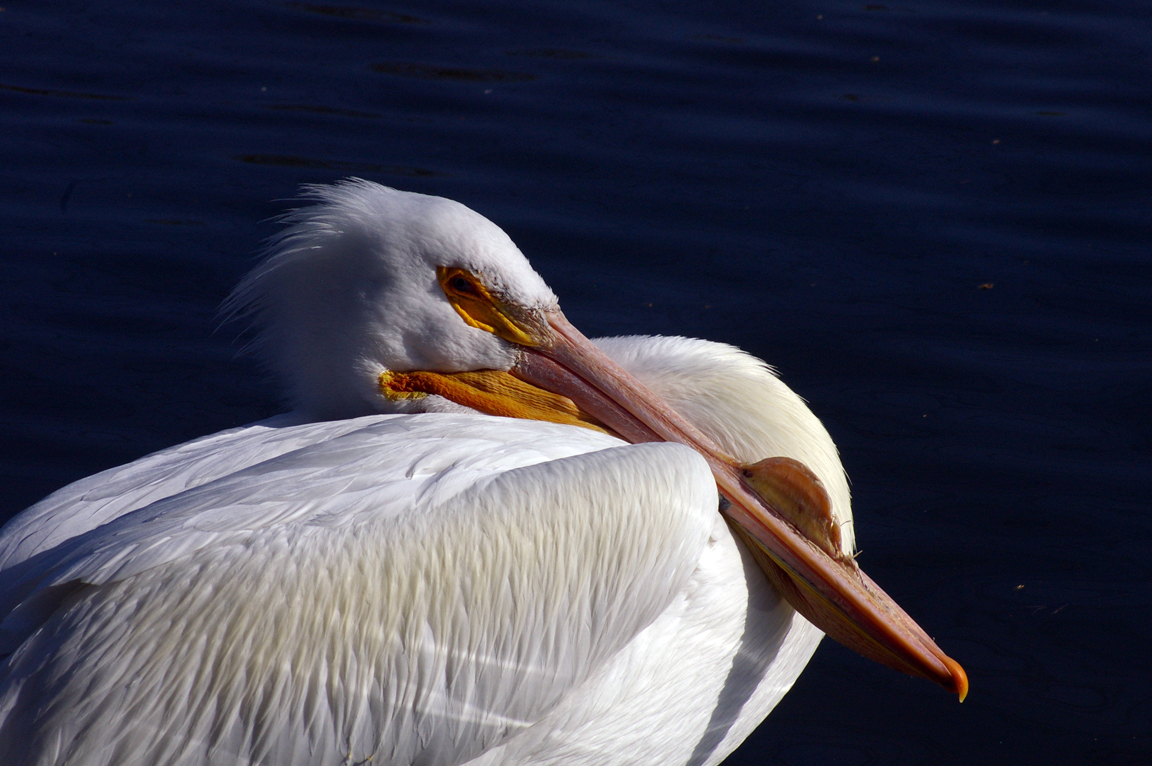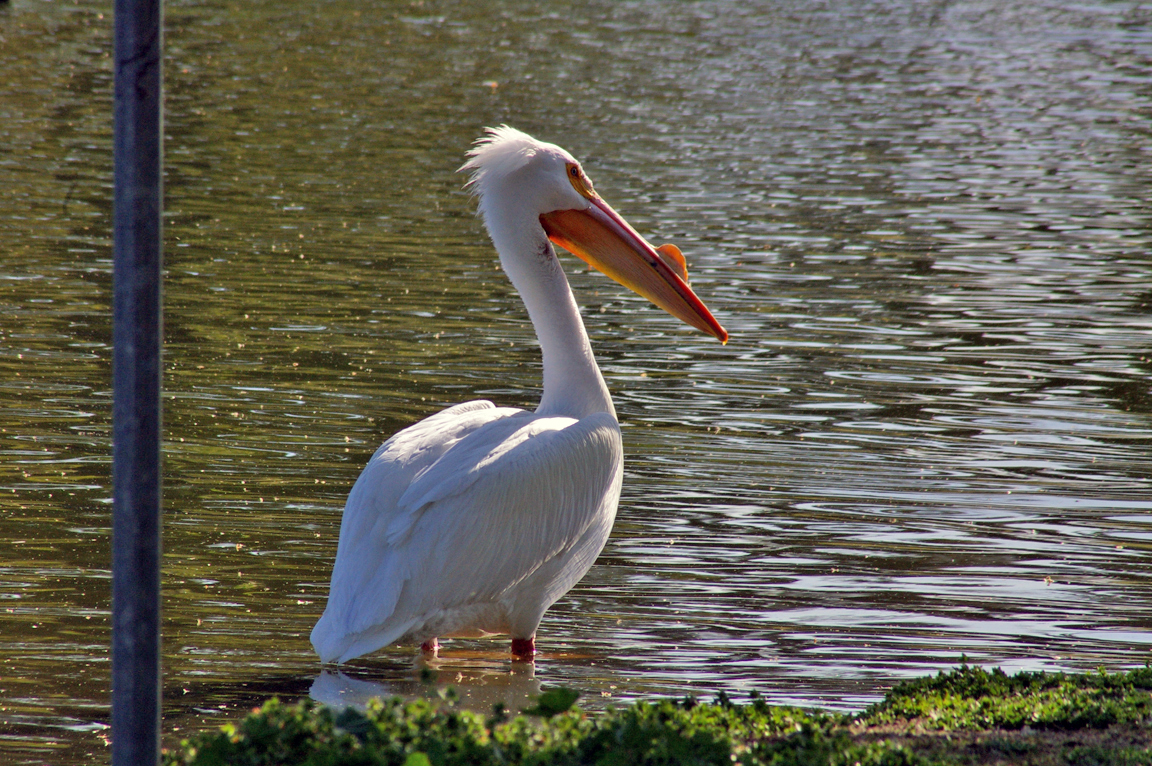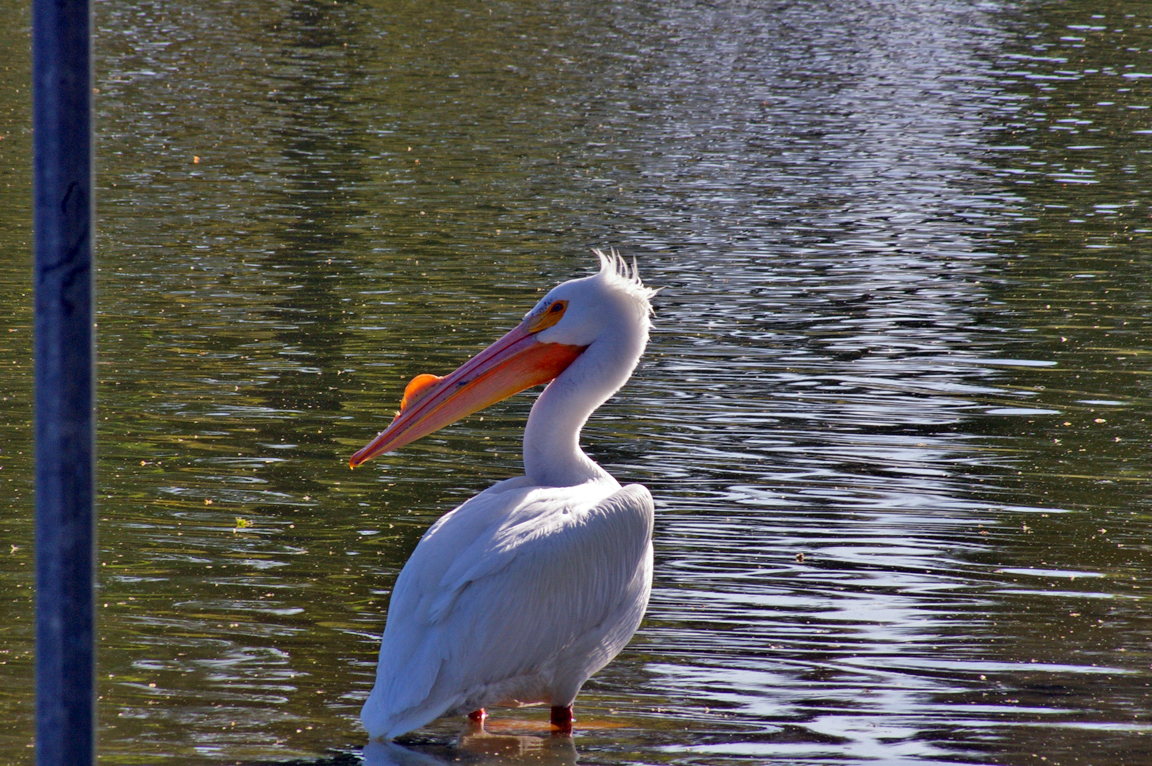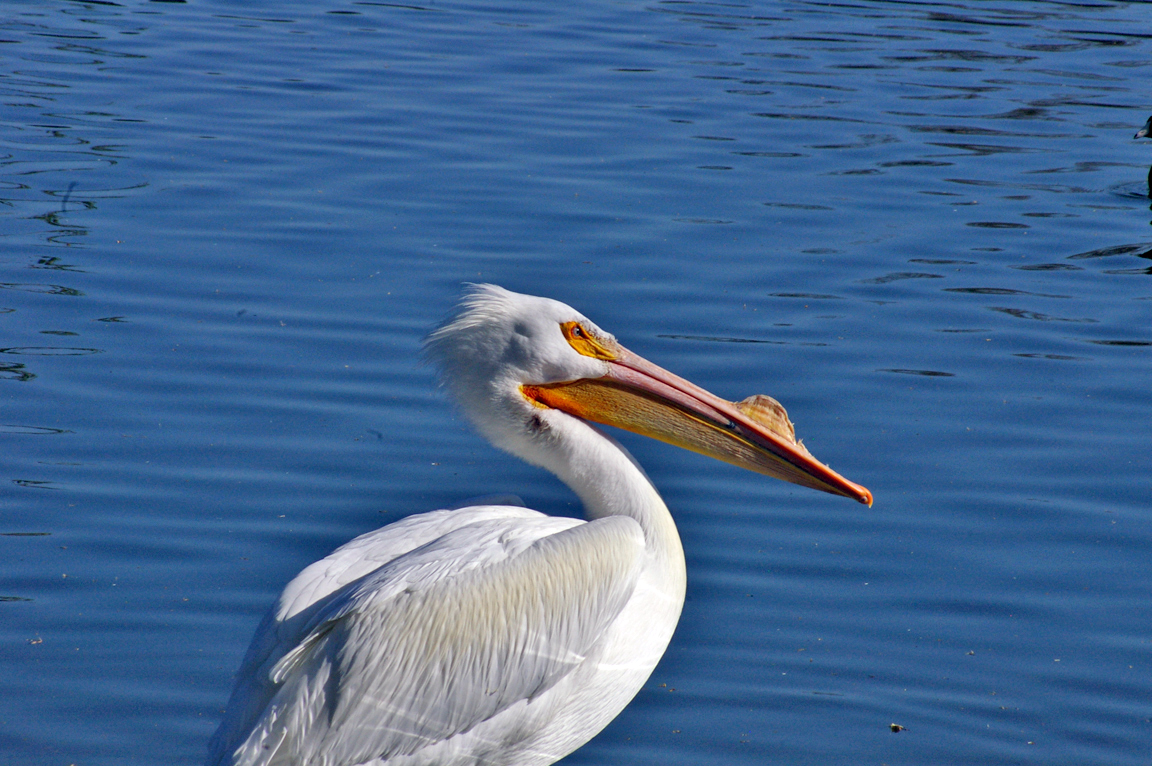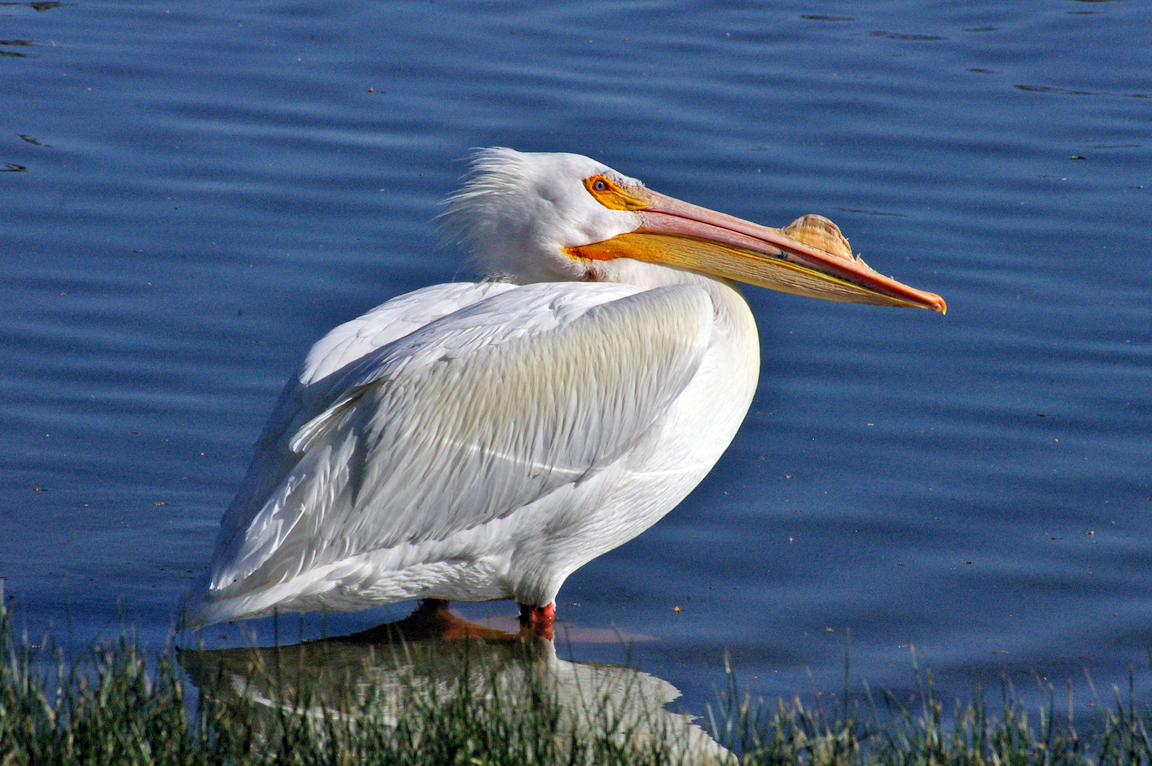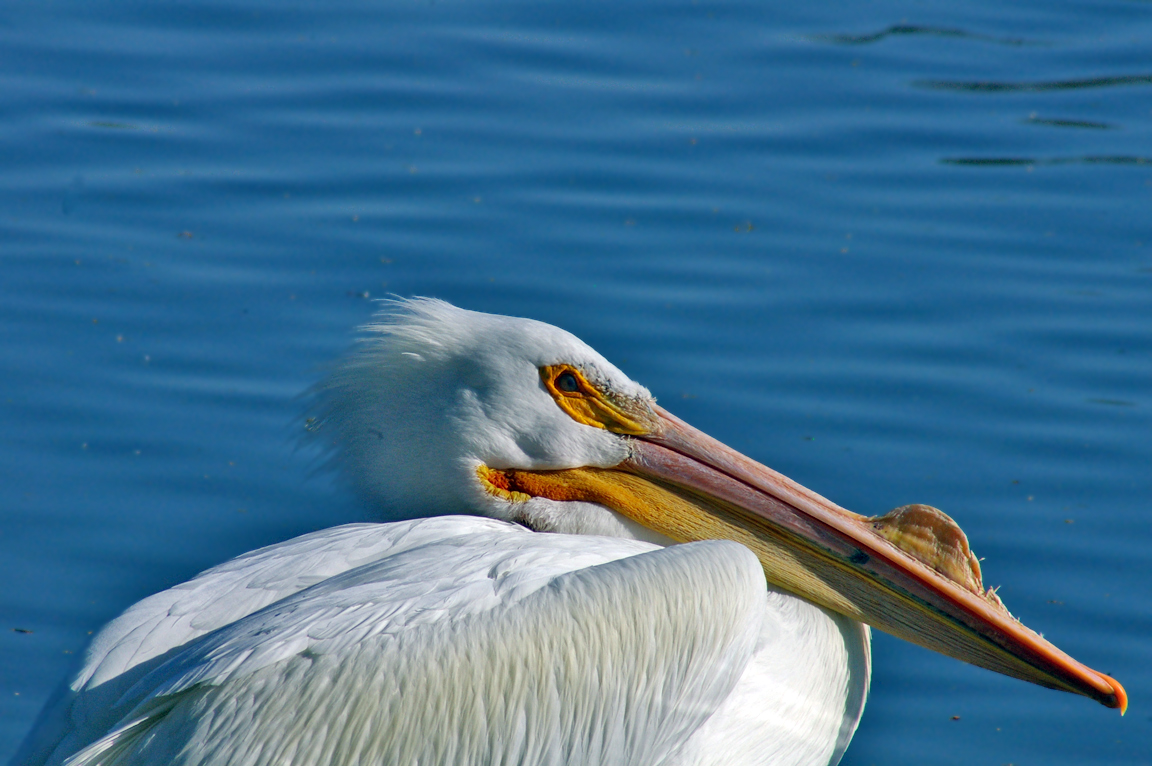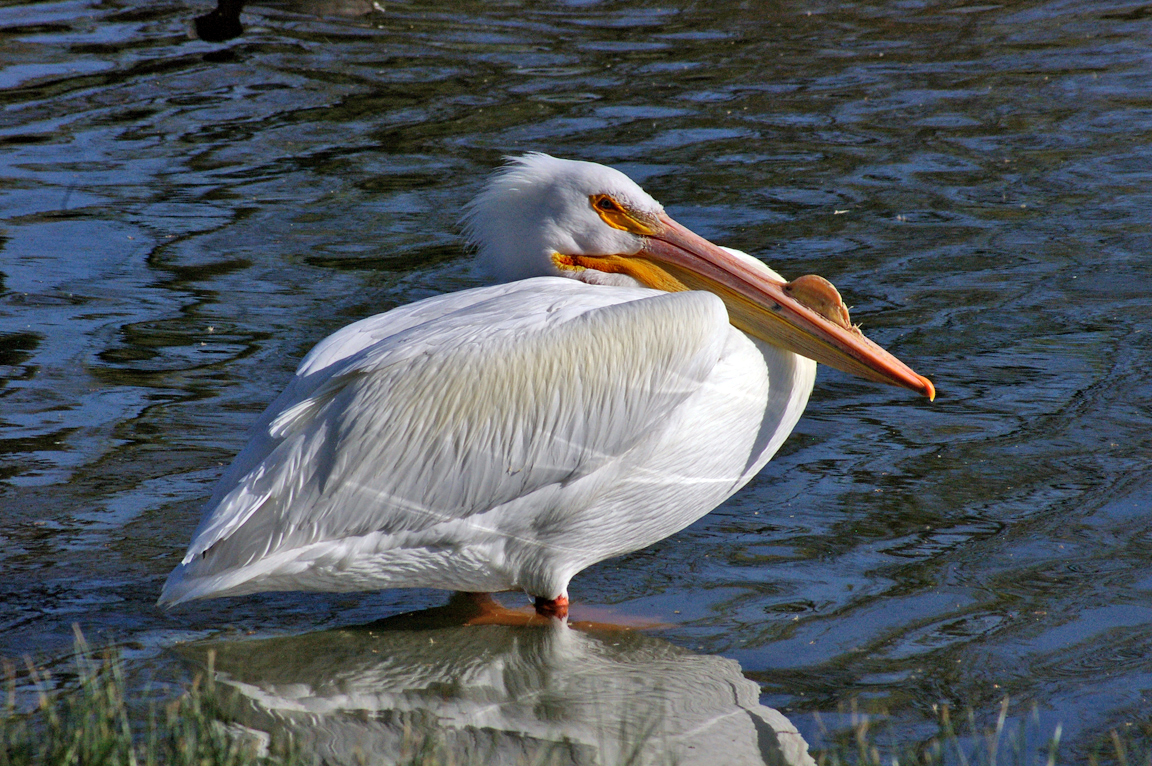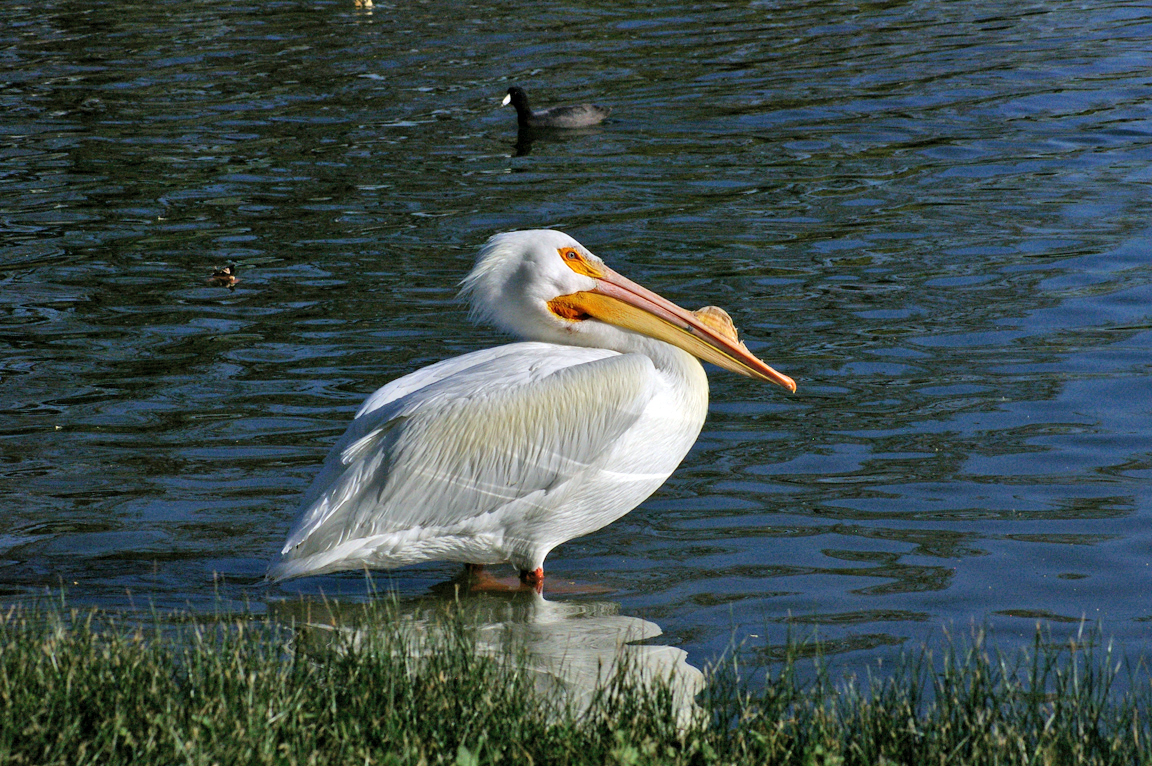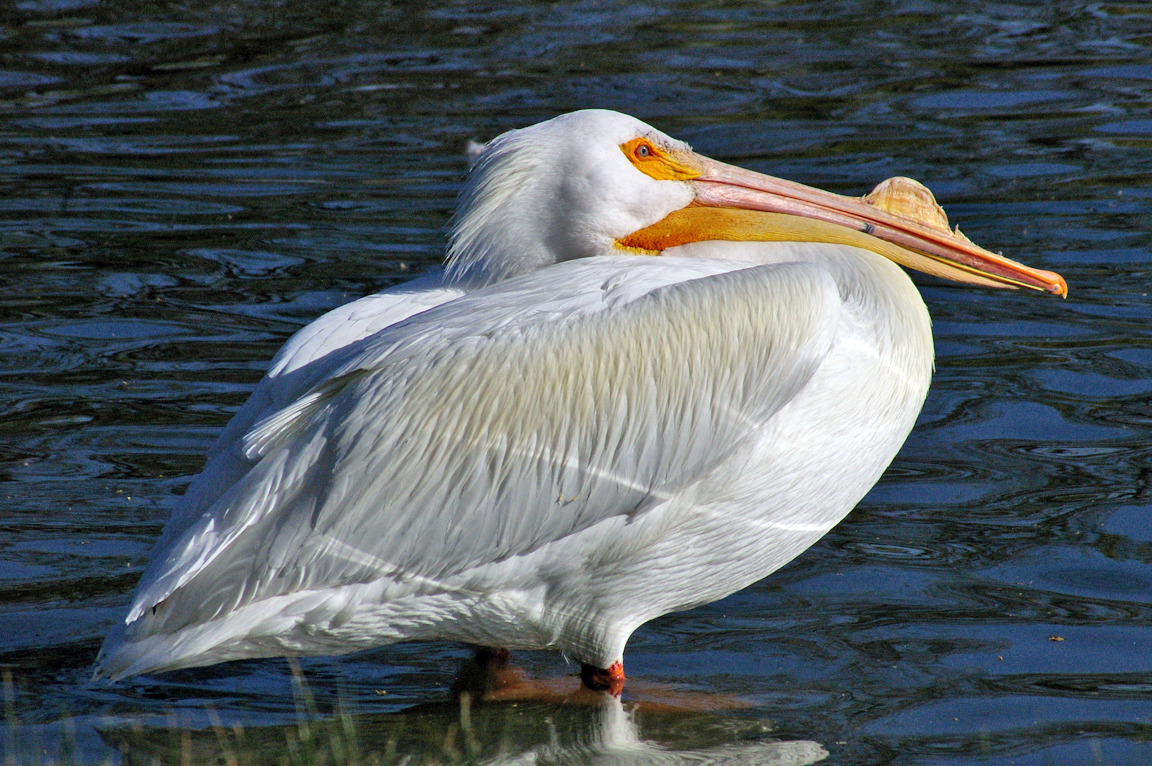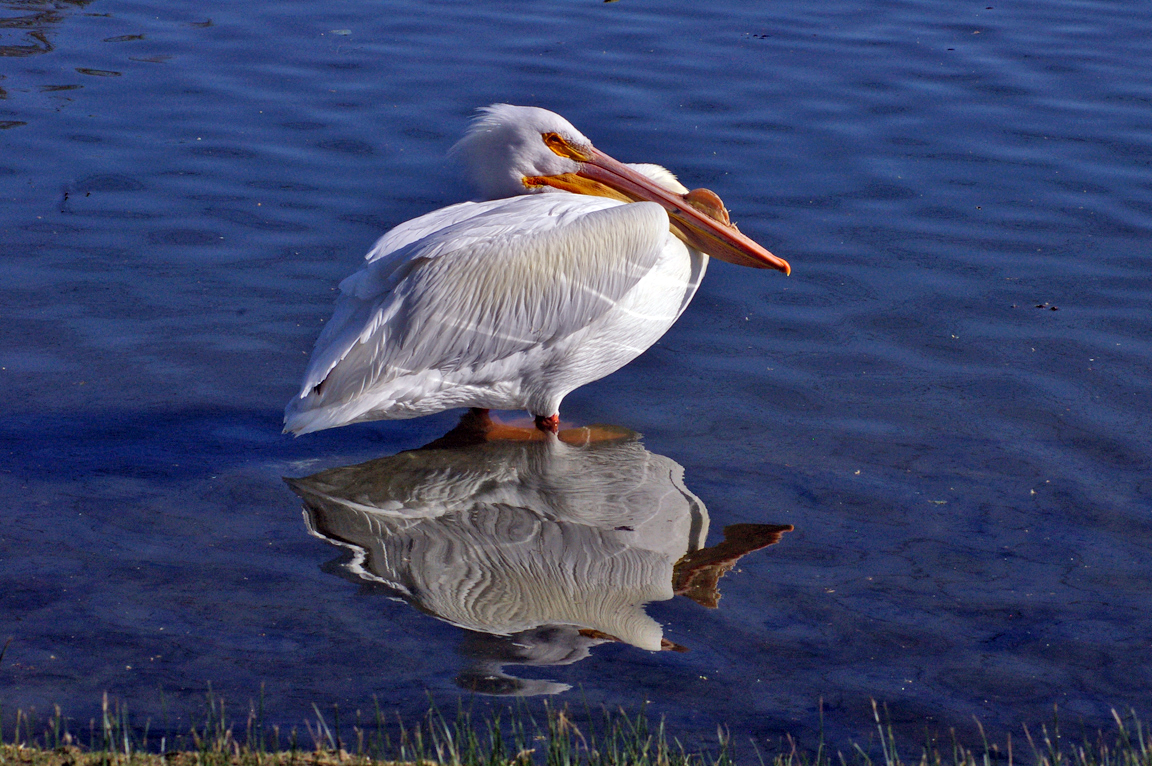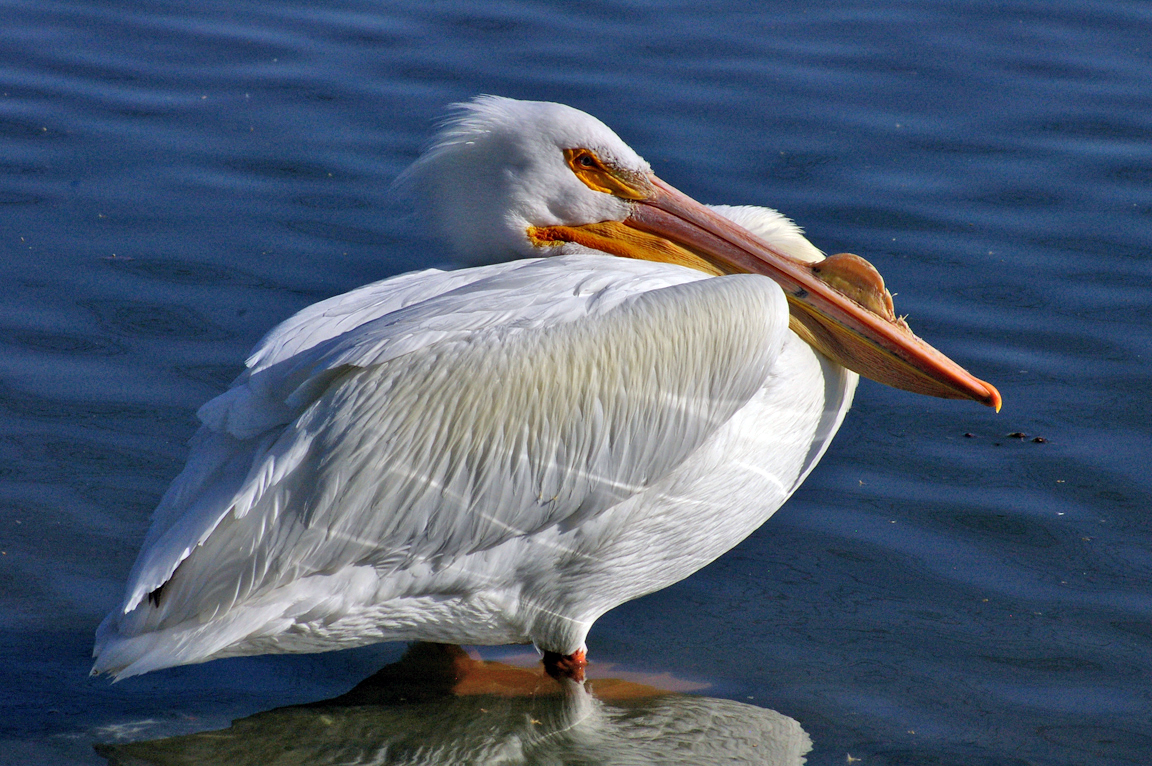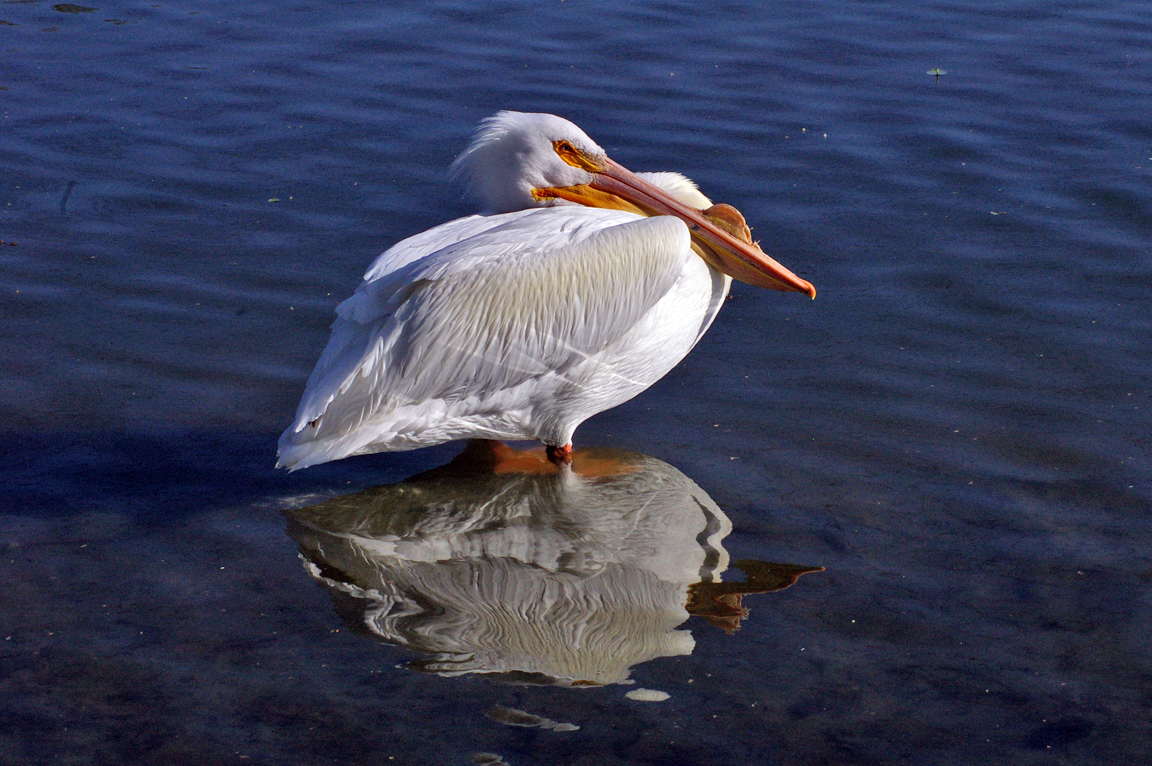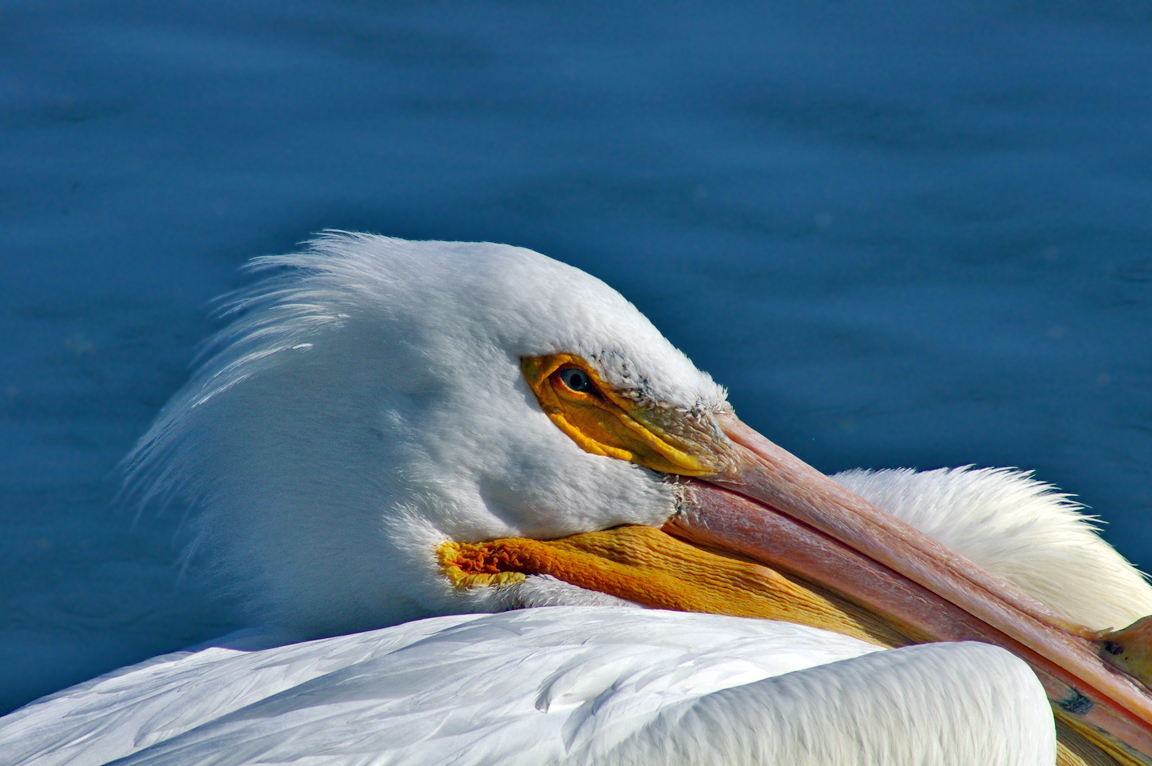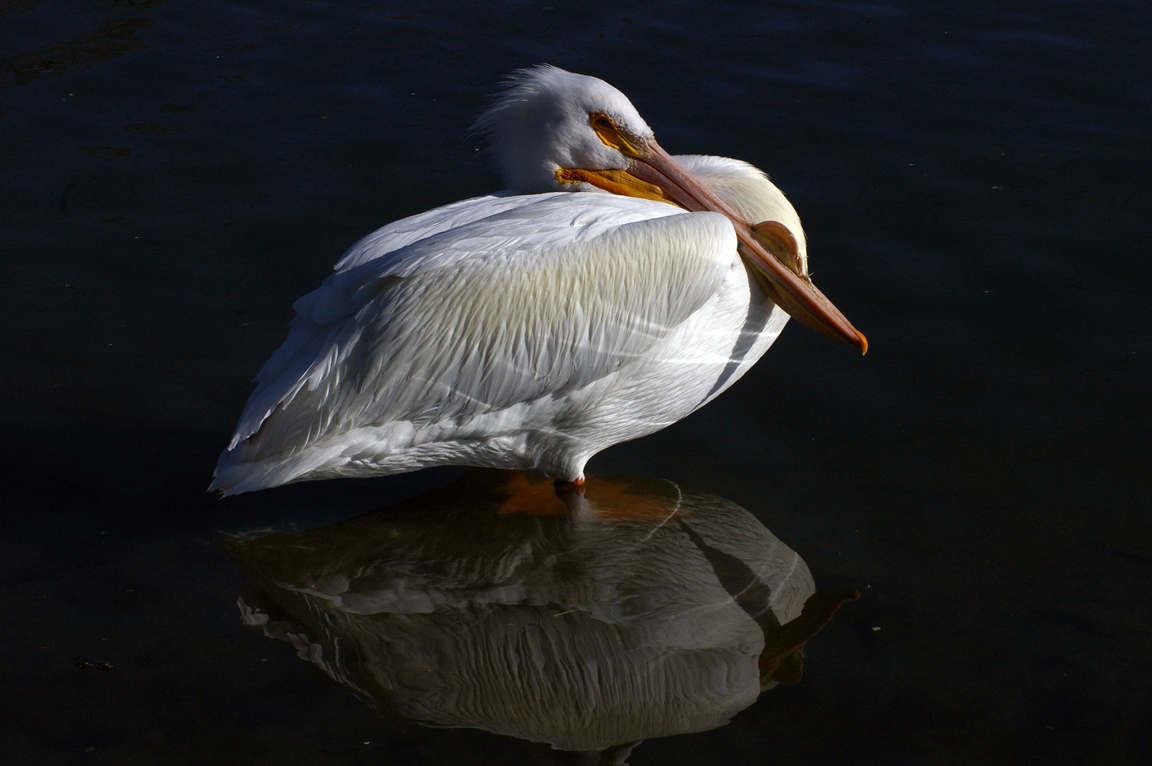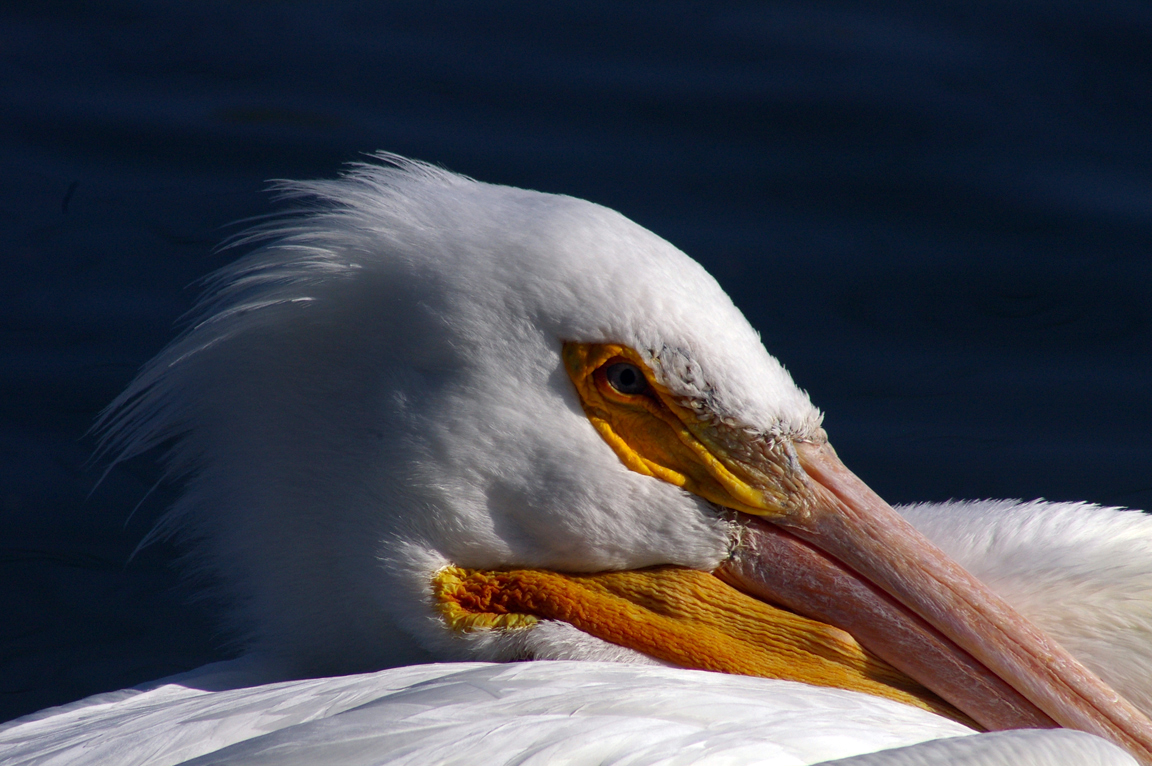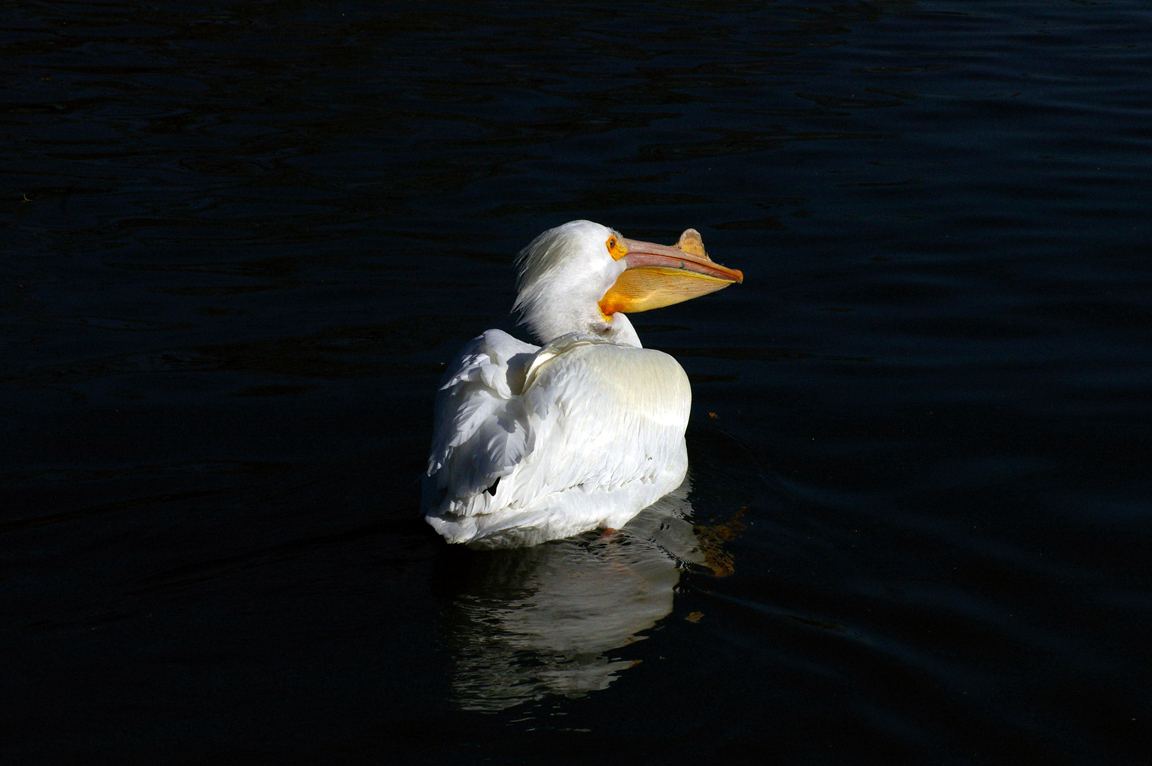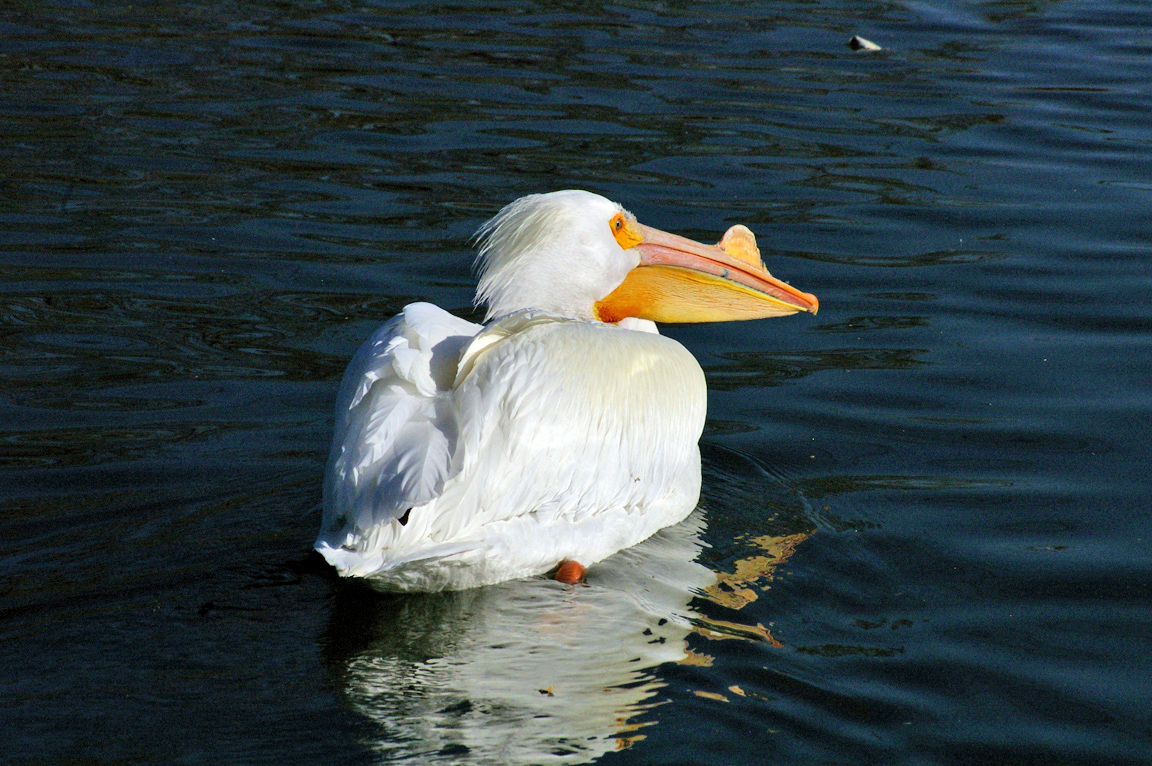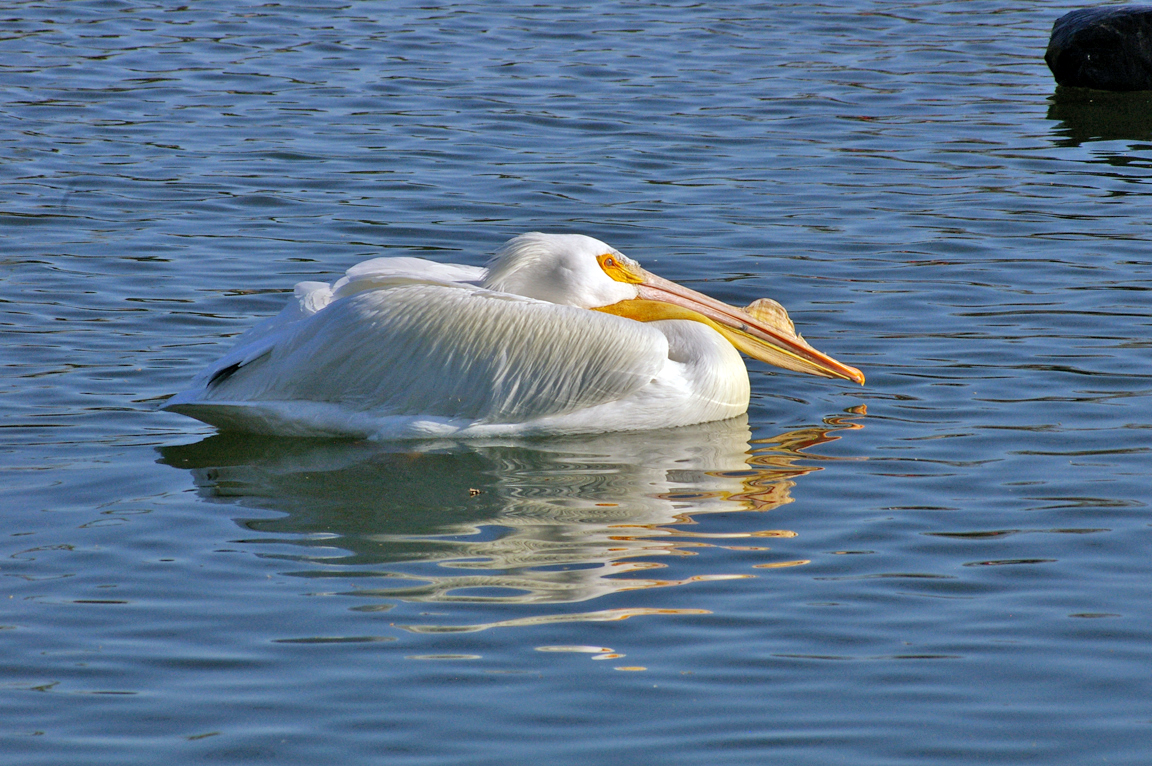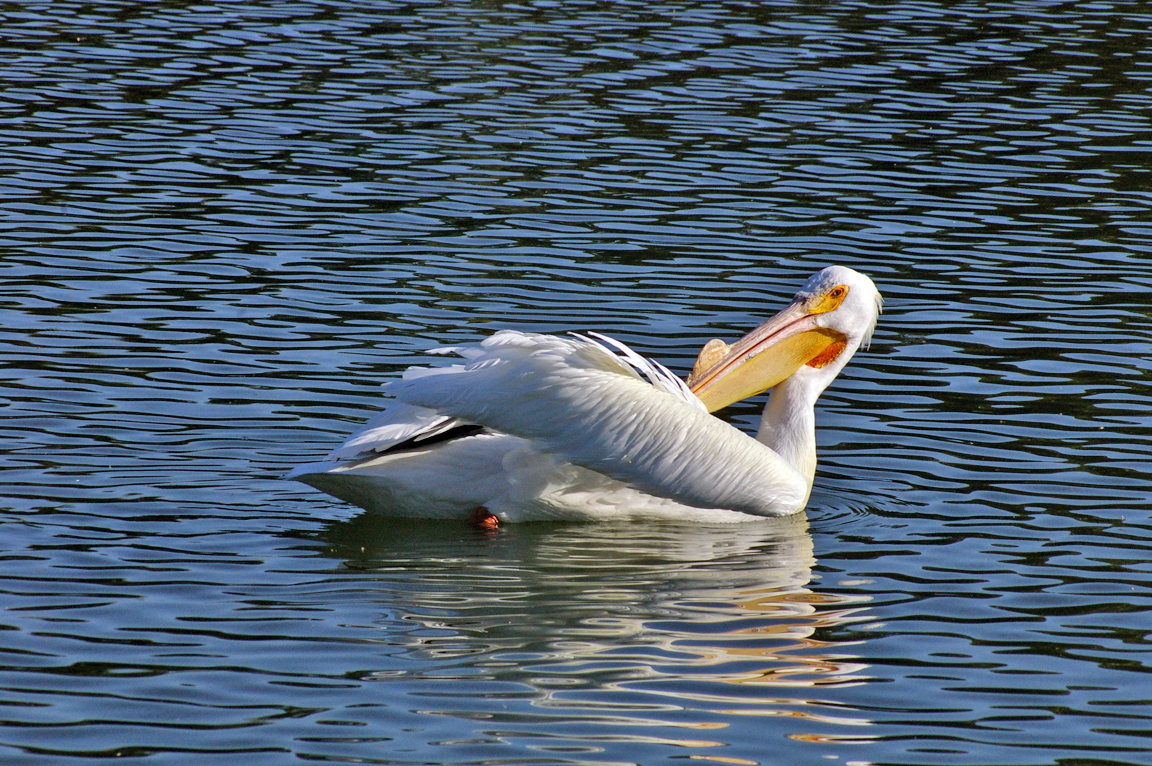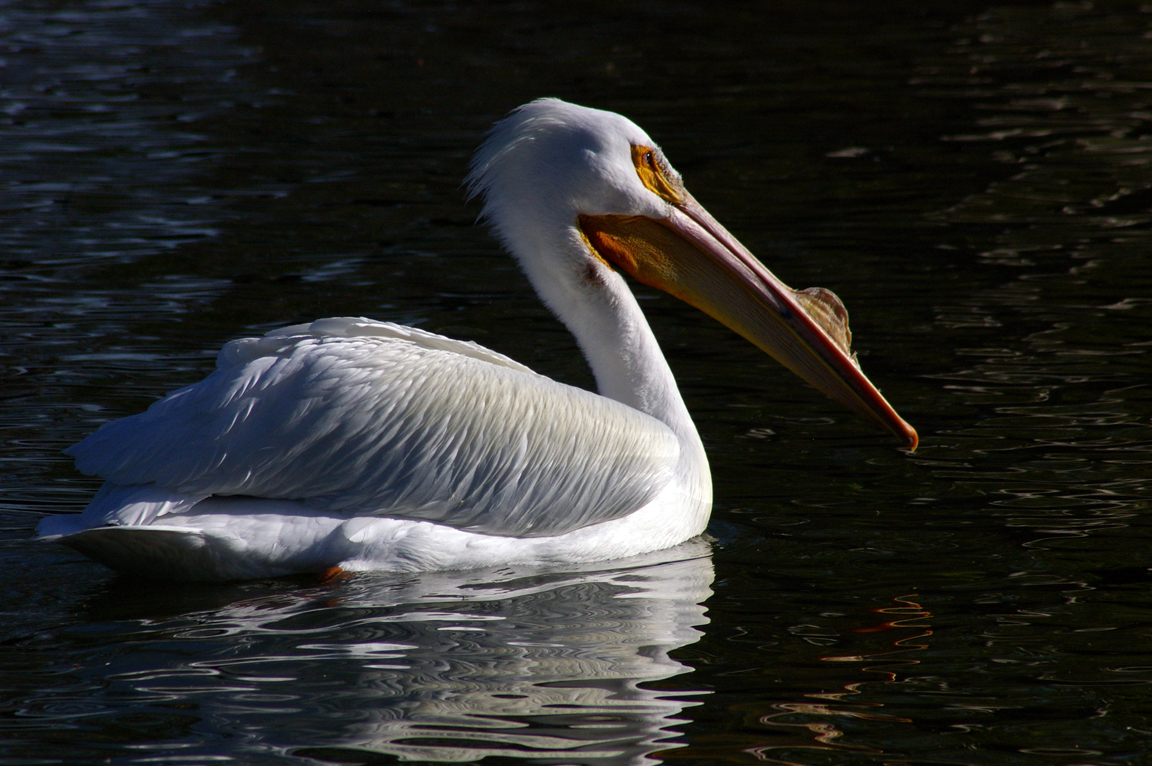|
|
|
 |
American White Pelican
|
| Pelecanus erythrorhynchos | |
Breeding on lakes throughout the northern Great Plains and mountain West, the American White Pelican is one of the largest birds in North America. It winters along the coasts, but breeds only inland.
Interesting Information
The White Pelican does not dive for fish as the Brown Pelican does. Instead, it dips its head underwater to scoop up fish. Several pelicans may fish cooperatively, moving into a circle to concentrate fish, and then dipping their heads under simultaneously to catch fish.
Description
Adult Description
- Size: 127-165 cm (50-65 in)
- Wingspan: 244-290 cm (96-114 in)
- Weight: 4500-9000 g (158.85-317.7 ounces)
- Large, white waterbird.
- Long bill with extensible pouch.
- Legs short.
- Body large and heavy.
- Feet webbed.
- Wings long and broad, with black trailing edge.
- Tail short.
Sex Differences
Sexes look alike.
Immature
Juvenile similar to adult, but with dirty grayish markings on head and back.
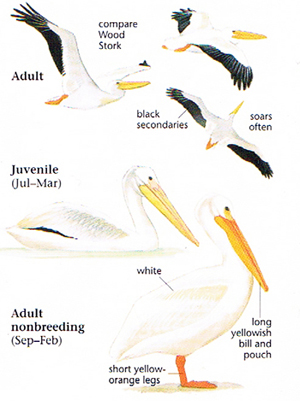
Photo taken from: The Sibley Field Guide by David Allen Sibley
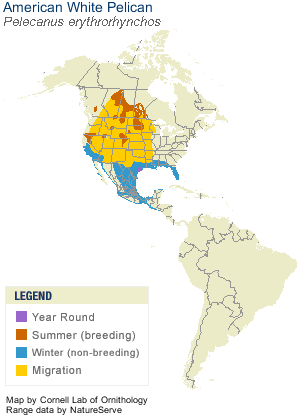
© 2003 Cornell Lab of Ornithology
|
Habitat |
|
Preferred habitats include shallow lakes and coastal lagoons. |
|
Behavior |
|
Unlike the Brown Pelican, this bird does not plunge dive for food. |
|
Food |
|
Fish. |
Taxonomy
| Kingdom: | Animalia |
| Phylum: | Chordata |
| Subphylum: | Vertebrata |
| Class: | Aves |
| Order: | Pelecaniformes |
| Family: | Pelecanidae |
| Genus: | Pelecanus |
| Species: | Pelecanus erythrorhynchos |
Similar Species |
|
|
Bird Sound |
|
Generally silent away from nesting colony. Nestling give whining grunts for food; adults have low, hoarse display calls. |
|
Eggs look like this |
|
Photo taken from: ARCTOS Collaborative Collection Management Solution |
